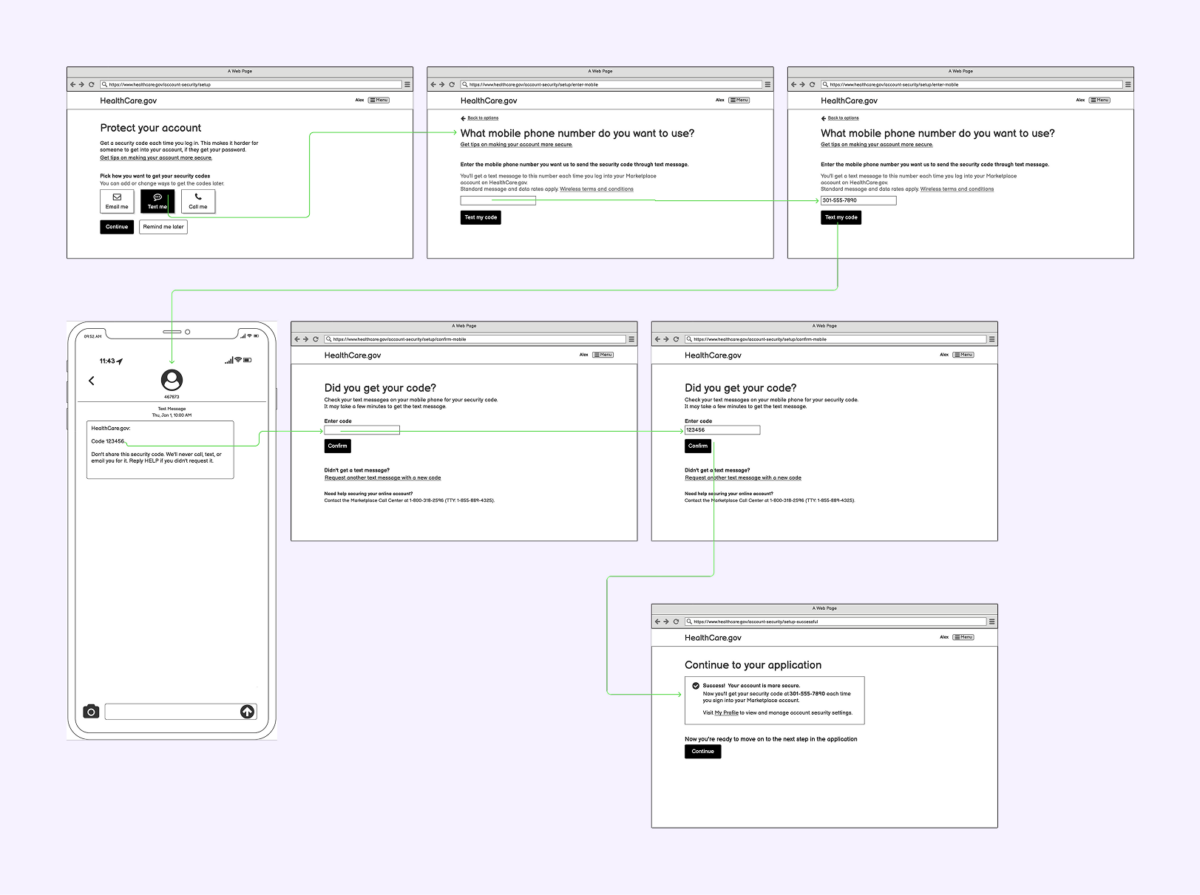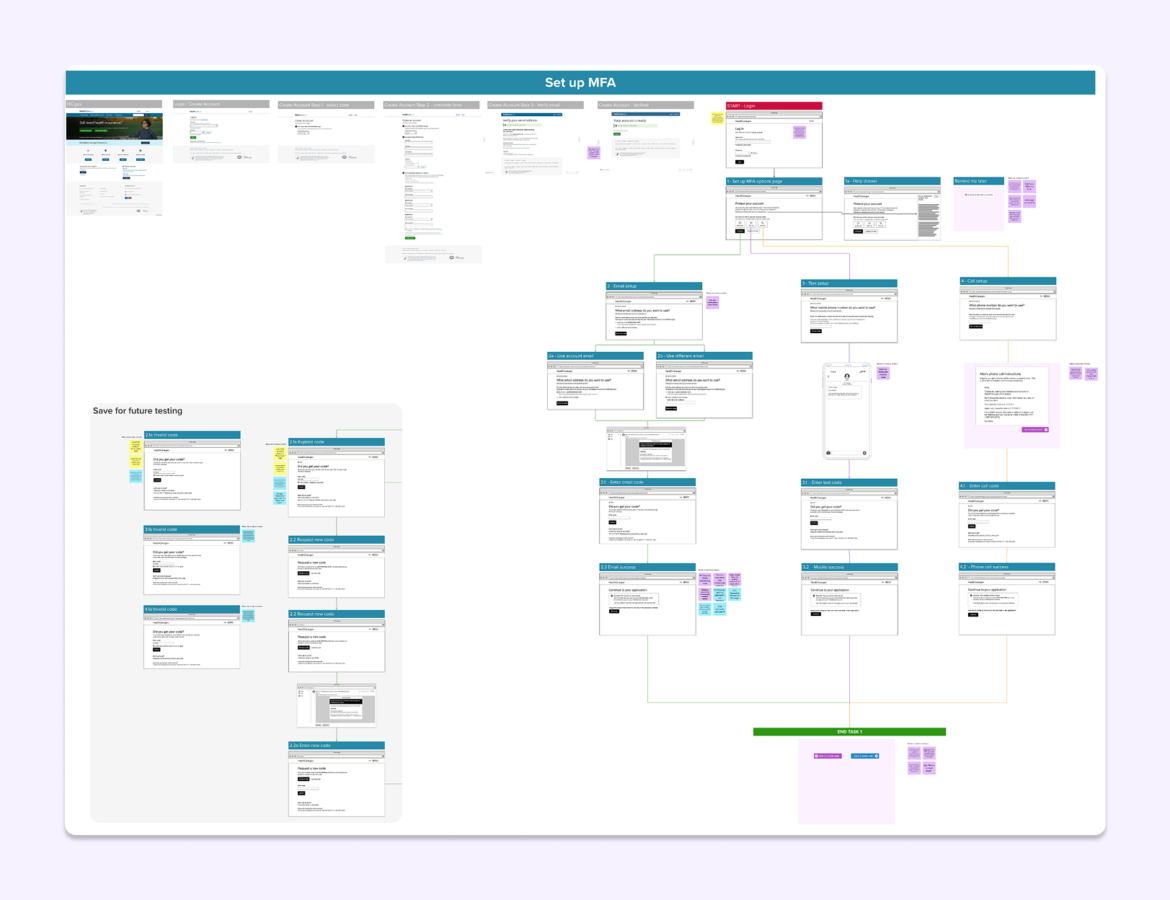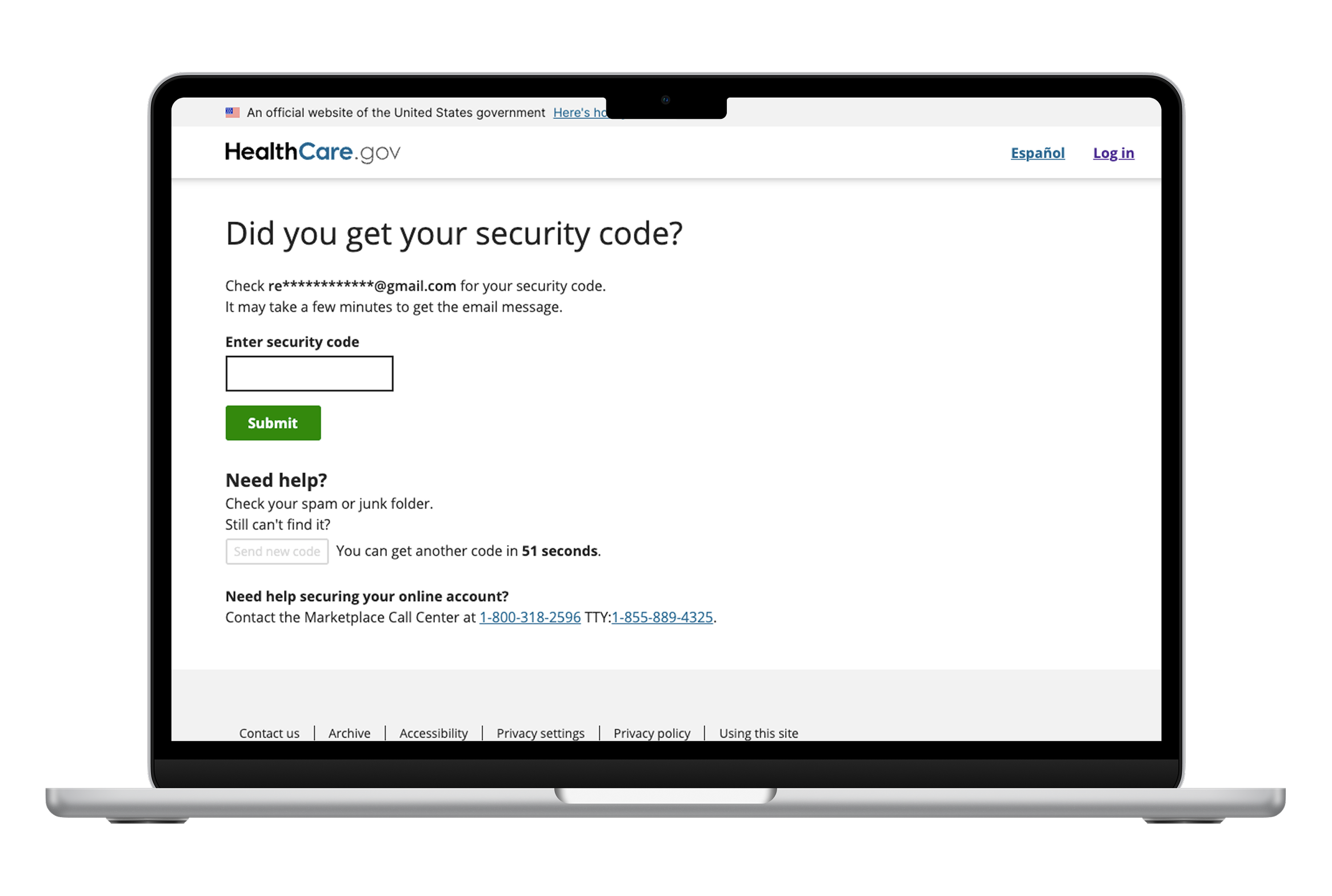In 2022, the Centers for Medicare and Medicaid Services (aka CMS) needed to ensure a secure login process for the 16+ million Americans who had accounts on Healthcare.gov. The initial goal was to launch multifactor authentication for all new users in time for annual open enrollment.
My approach
I was the Sr. UX Designer for the project, replacing a designer on leave who originally started the work. I joined in April 2022 and quickly got up to speed so I could help get the project over the finish line. At this point, we had 6 months to go before open enrollment.
Here’s what I did:
- Drafted a user research plan to test the multifactor design solution Healthcare.gov accounts.
- Created wireframes and a clickable prototype for usability testing.
- Synthesized insights from 15 moderated usability tests with Healthcare.gov and Medicare.gov users. (The tests were moderated by a third-party contracted by CMS.)
- Recommended design and content improvements based on usability testing findings.
- Created hi-fidelity designs to hand-off to developers.


Results
Multifactor authentication was launched on Healthcare.gov in time for the 2022 open enrollment period. Initially, all new users were prompted to set up at least one multifactor login method for their accounts. Later, multifactor authentication was made available to all 16+ million users on Healthcare.gov.

Visit Healthcare.gov to see it in action.
How you can achieve similar results
UX Design
- Create a clickable prototype and wireframes to test a design solution with actual users, like I did for Healthcare.gov.
- Improve the design solution based on usability testing results.
- Use the updated wireframes and/or a prototype as a guide for your team to implement on your website or platform.
UX Research
- Make a user research plan so you know what to test and how.
- Conduct user research with your actual users (e.g., moderated interviews.
- Synthesize findings from user research interviews and make recommendations for improvements to your website or platform.